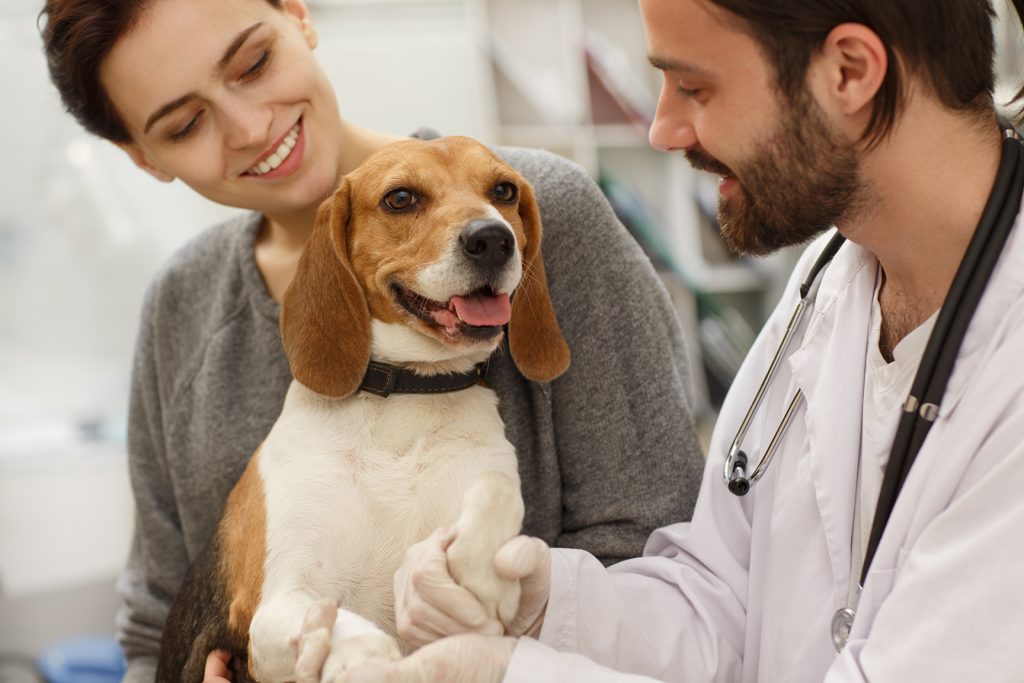Visiting the Vets

Besides their owner, a good veterinarian is the most important human in a dog or cat’s life. It truly pays to take the time to find a qualified, friendly vet who is the perfect match for you and your furry friend. After all, this is a relationship that will last a lifetime! Your dog or cat’s first visit to the vet need not be stressful. If you take some time to prepare for that first visit and follow some easy pointers, you can eliminate, or at least decrease, much of the anxiety that may arise for both you and your pet.
Unless you happen to be one of the very few owners whose pet is as cool as a cucumber, for your dog or cat, visiting the vet is NO fun! It starts with a wrestling match to get the cat into a carrier or your dog into the car, followed by the (as far as your pet is concerned) the “drive of doom”, then an excruciatingly long wait in the vet’s lobby, alongside other barking dogs and other hissing cats and then, to top it all off, some strange human put their hands all over your pet… No wonder they don’t like it!
Now, taking your dog or cat to the vet may never be a walk in the park, but there are ways of making it more manageable and less stressful for both you and your pet. The first thing you can do is regularly give your dog or cat a head-to-tail examination. You might not know what you are looking for, but doing it will get your pet used to being handled and will also mean you’re far more likely to notice if your pet has a problem.
The next thing you’ll need is a good carrier in the case of your cat or small dog and a good lead with regard to larger dogs. We’ll start with a carrier: the type of carrier you use can go a long way to help reduce the amount of stress your cat or small dog feels. The carrier you purchase should be large enough so that your pet can stand, stretch and make a full turn. At Pets Corner, we’d recommend a hard carrier, and you might want to choose one that has a top-loading feature that makes it easy to lift out a scared pet. It’s also important to get your pet accustomed to being in a carrier. If your pet only gets into the carrier to see the vet, chances are it’ll resist it. By incorporating the carrier into their daily life, by leaving it open where they spend the majority of their time, so they can use it as a nap space and by incorporating it into playtime, maybe even giving them a good quality treat every time they go inside, will go a long way to putting your pet at ease before you have to use it. The most important thing to bring along to a larger dog’s veterinary visit is the right kind of lead: a short lead is best suited to keeping them under control in what may be a busy, unfamiliar environment.
For a lot of pets, cats especially, it’s not visiting the vet that’s a worry, it’s the journey to the vets. As a general rule, dogs can but cats positively hate cars. Pets like things to be familiar and predictable, and not only are cars not always a typical part of a pet’s everyday life but for most cats and some dogs, the only time they get taken for a drive is for the dreaded vet visit. It’s worth acclimating your pet to car travel, although some dogs and cats never relax inside a car, most can get used to it with a bit of practice. Taking your dog or cat for short drives (5 minutes around the block) and gradually increasing length, can teach your pet to relax during car trips. You might even try stopping at the vet’s for a visit even if you don’t have a check-up scheduled, especially if your vet has friendly staff that will make a fuss of your pet.
When booking a vet visit for your pet, try and schedule the appointment at the vet’s least busy time. This will minimise long waits and the chaos that a vet’s waiting room can be during busy periods. But if you can’t, remember that it helps your pet if you remain calm, your dog or cat will take cues from you. To help your pet relax at the vets, you might also like to try a calming spray. Pheromone sprays like Beaphar CaniComfort for dogs, and Beaphar CaComfort for cats which contains a synthetic form of scent that helps reassure them whenever they are anxious or stressed, or herbal calming sprays like pet remedy can help calm the nerves of your pet without sedating them. Found a suitable calming product for your pet Here
Unfortunately, there is no getting around the fact that your dog or cat will be poked and prodded during vet visits. But you can ease the discomfort by talking to your pet in a soothing voice during the experience. It also helps to bring something from home such as a towel or blanket to set them on and a favourite toy or treat that you can use to distract your pet during the check-up. And don’t forget to finish off the veterinary visit by giving your pet a treat and a long petting session for being so brave. Not only will it help to further calm any jittery nerves brought on by an unfamiliar environment, but your pet will learn to associate a visit to the vets with food and rewards… kind of like giving a child a sugar-free lollipop at the doctors!

